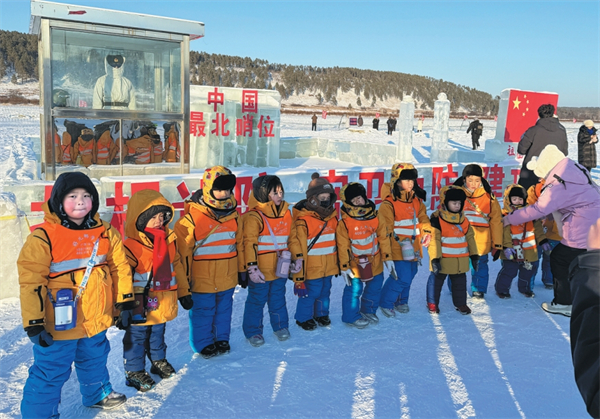Home>Biz updates
Harbin rides on steady economic growth
Updated : 2019-08-02
By ( chinadaily.com.cn )
Harbin in Northeast China’s Heilongjiang province saw a 5 percent increase in GDP to 271.77 billion yuan ($39.17 billion) in the first half of the year and maintained steady economic growth, according to information from the Harbin municipal statistics bureau.
The industrial structure of the city has been optimized and the growth rates of its primary, secondary, and tertiary industries reached 2.8, 2.6, and 6.1 percent, respectively.
In the first half of the year, the city continued seeing sound and steady development in its industrial production. The added value of the city’s hi-tech and strategic emerging industries accounted for 22.1 percent and 32.5 percent, respectively, of industrial enterprises above a designated size. These numbers are 3.6 and 6.9 percentage points higher than the previous year.
The contribution of the city’s financial industry to GDP growth reached 16.1 percent, and securities transactions and premium incomes increased by 29.5 percent and 8.6 percent, respectively.
Harbin received 44.75 million tourists from January to June this year, an increase of 9.5 percent year-on-year. Tourism revenue totaled 75.09 billion yuan, a year-on-year increase of 14.6 percent. Inbound tourism generated a foreign exchange income of $74.13 million, a year-on-year increase of 47 percent.
Industrial investment over the first six months increased by 19.9 percent year-on-year.
The growth rate of fixed asset investments reached a five-year high. Harbin's fixed-asset investment grew 10.7 percent year-on-year, 4.9 percentage points and 7.2 percentage points faster than the overall growth rates of Heilongjiang province and the entire country, respectively. Its growth rate was faster than Shenyang, Changchun, and Dalian—the other three major cities in Northeast China.
The total value of the city’s imports and exports increased by 20.1 percent year-on-year from January to June, and the growth rate was 16.2 percentage points higher than the national average. The growth rate of the city's foreign trade also ranked first among the four major northeastern Chinese cities.
Total retail sales of consumer goods for the city increased by 7.7 percent year-on-year, 1.8 percentage points higher than the same period last year.
By the end of June, the city's general public budget expenditure had increased by 26.5 percent year-on-year, ranking first in the province and among the 15 sub-provincial cities in China.
In addition, the city's registered unemployment rate in urban areas was 3.77 percent, 0.53 percentage points lower than the city’s control goal.

Harbin ramps up childcare services
A new comprehensive service center for childcare in Harbin is expected to be finished by the end of the year.
-
Talent policies drive enterprise development in Harbin
Harbin's "30 New Talent Policies" represents an iterative upgrade to the talent policy system, helping attract and retain talent to bolster economic and social development.
-
Official website of 2025 Asian Winter Games goes live
Harbin, the host city of the 9th Asian Winter Games, has announced that the official website for the 2025 event has recently gone live.
-
Harbin launches measures to facilitate more foreign trade
In the first three quarters of 2023, the total import and export value of Heilongjiang province's goods trade hit 218.22 billion yuan.





